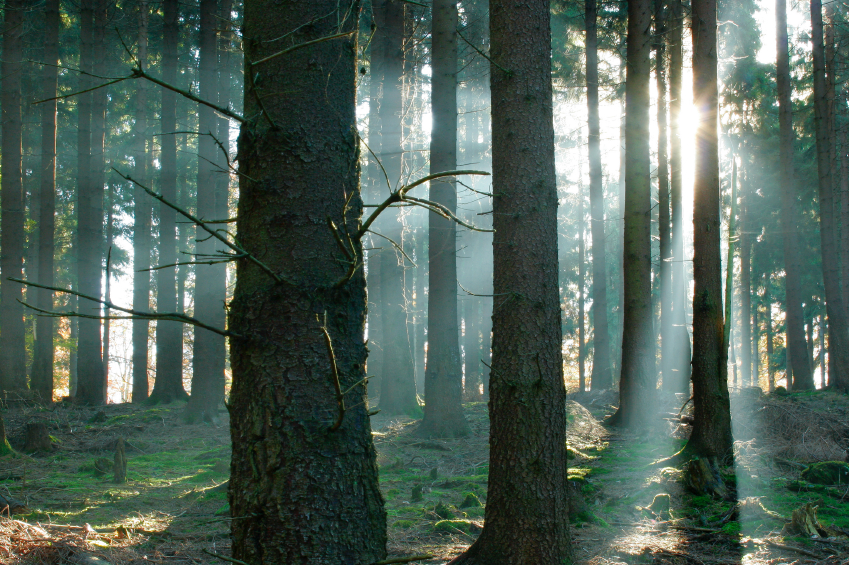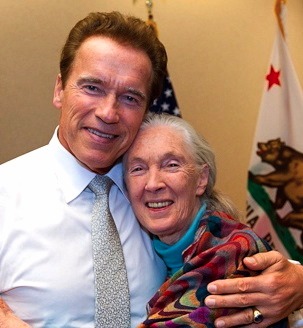 In the context of an overall bleak 2010 for the planet, forests offer a bright point for some celebration — showing this sector as the area offering perhaps the best hope for continued progress in fighting climate change. Towards that end, here are the world’s top five forest stories of the year:
In the context of an overall bleak 2010 for the planet, forests offer a bright point for some celebration — showing this sector as the area offering perhaps the best hope for continued progress in fighting climate change. Towards that end, here are the world’s top five forest stories of the year:
Global decline in deforestation, showing that REDD+ is working: By far the most important story of the year was the significant decline in deforestation, particularly in the Amazon. According to a report by the Global Carbon Budget in Nature Geoscience, emissions from land use change have declined about 39 percent, a marked contrast to the approximately one quarter increase [PDF] in fossil fuel emissions, driven largely by developing countries like China.
Brazil has led the way — cutting deforestation by a whopping two-thirds in five years — by doing things like better enforcing laws against illegal logging, supporting indigenous peoples’ land rights, stopping land conversion to cattle pasture, intensifying existing cattle operations from an average of one head of cattle per hectare to three, and imposing a moratorium on deforestation for soy. They’ve been aided in this work by a generous $1 billion contribution from Norway for Brazil’s Amazon’s Fund — showing the possibility of forest conservation finance (also known as Reducing Emissions from Deforestation and Degradation or REDD+) to achieve dramatic positive results.
Through all this, Brazil has managed to increase agricultural production year after year — finally breaking the link [PDF] between deforestation and prosperity: a lesson far more developed countries could learn. In the words of Dr. Douglas Boucher at the Union of Concerned Scientists:
Brazil — a tropical developing country — has already done something to counter climate change that is comparable to what the biggest industrial powers in the world have simply promised to do a decade from now.
One new study even shows significant declines in deforestation in Indonesia, which nonetheless remains the world’s deforestation hotspot, and, as a result, the world’s third largest global warming polluter.
There are risks on the horizon: commodity prices are surging, in part in response to more frequent, climate-driven extreme weather events like fires in Russia and a poor sugar crop in Brazil that cut supply. With higher prices, deforestation makes more economic sense to the people doing it. And Brazil and other rainforest nations are still pursuing mega-deforestation projects such as the Belo Monte dam and massive palm oil development.
But the new forest-prosperity paradigm seems to be gaining political traction that just might overcome these challenges: Indonesia recently concluded an agreement with Norway to finance deforestation reductions there. And in Brazil, Green Party candidate Marina Silva shocked the world by garnering almost 20 percent of the vote in the country’s first round presidential elections, forcing a run-off between the two major party candidates, who quickly engaged in a green “race to the top” by touting their forest protection platforms. It was a powerful democratic endorsement of the concept of “green growth.”
Greenpeace and friends strike blows against palm oil: 2010 was the year of the corporate campaign, and Greenpeace was its master. Indonesia’s orangutans can be grateful. Greenpeace used its trademark hard-hitting creative campaigns and its millions of members around the world to bring huge pressure on corporate users of palm oil, which is responsible for the bulk of the enormous forest destruction afflicting Southeast Asia.
They made people think of orangutan blood when they thought Kit-Kat, and made even palm oil investors like HSBC feel like their dollars were drenched in pollution.
These tactics worked and the world’s biggest palm oil consumers announced plans to switch to so-called “sustainable” palm oil — palm oil certified not to come from very recent deforestation. Investors dropped their palm oil stock. And Unilever even invested in a company that plans on synthesizing palm oil from algae — a next generation possibility for super-sustainable palm oil.
While there are doubts about whether palm oil can truly be sustainable — even if it’s not grown on recently deforested land, it takes up area that could be reforested — Greenpeace’s efforts have given market force to sustainable palm oil. Even the industry-backed group that certifies allegedly “sustainable” palm oil, the Roundtable on Sustainable Palm Oil, has taken some steps to ensure that its seal of approval is more than just a marketing tool.
There are major challenges ahead: According to the National Wildlife Federation’s seminal report, “Food, Fuel or Forests” by Eric Palola and Nathalie Walker, palm oil demand is expected to surge, particularly to feed the hungry markets of China and India. Brazil alone is planning to convert 32 million acres of land to palm oil, though it promises to do so within ecological guidelines that encourage planting on previously degraded land, rather than pristine forest. And in Southeast Asia, there’s still huge amounts of land clearing and burning for palm oil: the Malaysian state of Sarawak just announced that it will raze one million hectares of forest for conversion to palm oil.
But the palm oil industry (and the Indonesia logging industry, with which it has close financial ties) is scared: and it’s even launched a front group in the United States to tout the alleged benefits of deforestation and attack Greenpeace and other advocates of tropical forest protection.
It’s going to take significant push back to keep them on the defensive — but let’s hope. Check out this video from Greenpeace’s palm oil campaign:
Canada becomes “world’s leader” in forest conservation: Canada’s forests are one of the world’s great mostly intact ecosystems, spanning from the temperate rainforests of the Pacific to the boreal forests that span a massive belt across the country. They’re a tremendous storehouse of carbon and their 1.5 million lakes are nurseries for more than 40 percent of North American migratory waterfowl.
It was announced this year that several years of work by gra
ssroots activists across North America, as well as government action, has made these forests more protected than those in any other major forest nation — more than the Russian boreal, more than the Amazon, more than the Congo Basin.
According to a report from the Pew Environment Group, 4.4 million of Canada’s 5.5 million square kilometers of boreal forest are intact — and of that, a whopping two-thirds is poised for permanent protection. The linchpin of these efforts is an agreement between environmental groups, the Forest Products Association of Canada, and indigenous First Nations to protect at least 50 percent of the northern forests, with carefully circumscribed development in the rest.
These gains didn’t come out of the blue. A primary driver were years of campaigns starting about a decade ago targeting purchasers of Canadian logs, like Home Depot, Staples, Victoria’s Secret, and Kimberly-Clark for purchasing unsustainably logged wood from the boreal and other Canadian forests. That made Canadian logging companies interested in coming to the table with environmentalists and First Nations to figure out a plan for protecting Canada’s forests. Check out Greenpeace’s video thanking Kimberly-Clark:
There’s still a lot of work to do — in order to be fully applicable, the agreement will need participation by the massive Western provinces of Saskatchewan, the Yukon, Manitoba, and Alberta. In addition, development of the ultra high carbon tar sands threatens large swathes of the boreal and their famous songbirds. But even as Canada remains a source of much of the Earth’s dirty fossil fuels, it’s also showing the world what’s possible through forest conservation.
First government-backed forest carbon market established in California: As much good as corporate campaigns — and foreign aid such as Norway’s contributions to the Amazon Fund and Indonesia — can do to change the market and reduce deforestation, there’s a temporary nature about it. Foreign aid can evaporate with a change of government or even just a budgetary squeeze — and corporate campaigns can be forgotten.
It’s estimated that between $30 to $40 billion is needed annually to end deforestation — and there’s just a few billion available from governments and non-profit organizations for tropical forest conservation.
In the words of Guyana President Bharratt Jagdeo at an Avoided Deforestation Partners event in Cancun, “The only way you have enough money to save forests is by bringing in the private sector.”
 Arnold Schwarzenegger hugs forest champion Jane Goodall at a California forest-climate event.Photo: Avoided Deforestation PartnersCalifornia took an important step towards starting that financial flow by including provisions in its recently adopted climate law (AB32) to allow emitters in California to get credit for investing in forest protection and restoration, both in California and in rainforest nations. Gov. Arnold Schwarzenegger has also concluded agreements with 14 states and provinces in Brazil, Indonesia, Mexico, and Nigeria to allow them to get credit for protecting their rainforests in California’s carbon market through REDD+.
Arnold Schwarzenegger hugs forest champion Jane Goodall at a California forest-climate event.Photo: Avoided Deforestation PartnersCalifornia took an important step towards starting that financial flow by including provisions in its recently adopted climate law (AB32) to allow emitters in California to get credit for investing in forest protection and restoration, both in California and in rainforest nations. Gov. Arnold Schwarzenegger has also concluded agreements with 14 states and provinces in Brazil, Indonesia, Mexico, and Nigeria to allow them to get credit for protecting their rainforests in California’s carbon market through REDD+.
Because forest protection, in particular, costs less than half as much as reducing emissions from the energy, transportation, and industrial sectors, it provides a great opportunity to get a big climate bang for the buck. In California, the inclusion of this affordable emissions reduction mechanism was a key factor in making the climate bill affordable — undermining the efforts of Texas oil companies to claim that the legislation would be too costly, and helping pass it at the ballot box.
The California climate law alone won’t provide anything like the billions needed to end deforestation — but it’s a start that will begin to unleash private capital for forest conservation, and show other states and the nations of the world that forests must be part of any successful plan to tackle climate change.
At Cancun, rules of the road for REDD: Despite low expectations, the Cancun climate summit represented a major step forward for forests. Most importantly, the nations of the world came to consensus on the rules of the road [PDF] for forest protection: In particular, they endorsed the idea that forests should be part of national plans to solve climate change.
This move is exactly what many countries have been looking for. Europe, in particular, has refused to credit tropical forest protection in its trading system — saying it was waiting for the United Nations process to give its imprimatur. Now that that endorsement is there, it’s time for Europe to stop waiting and recognize the huge opportunity they have sitting in their laps: The great climate debate in Europe right now is about whether to reduce pollution 20 or 30 percent by 2020. Because protecting forests is so cost-effective, including them will allow Europe to achieve the more ambitious target at the same cost as the 20 percent target, guaranteeing economic affordability and political viability.
There were a few important details in the REDD+ agreement: in particular, the United States showed admirable flexibility and said forest protection should adhere to the United Nations Declaration on the Rights of Indigenous People. That represents a huge breakthrough: The Bush administration had not only refused to sign the declaration, but had refused to sign any international agreement that even alluded to it. The Obama administration had stuck to that position — until the Cancun REDD+ negotiations, when they signaled a new flexibility, and then announced that they would actually sign the broader declaration. For forests, it’s an important recognition. Generally speaking, indigenous peoples’ forests are the best protected in the world — and it’s critical for the forests and just to ensure that indigenous people are included in and benefit from forest protection efforts on their lands.
From a diplomatic perspective, this move changed REDD+ from a highly charged piece of the debate with Bolivia (which tried to block adoption of the overall Cancun agreements) into one in which there was relative consensus.
The agreements also endorsed crediting of state and national action, giving key support to California’s efforts to spur state-to-state action to protection forests.
As good as the Cancun forest road map is, however, it’s just a map and not an actual road: The agreement leaves unstated where the financing for forest protection will come from, meaning more countries and regions will need to follow California’s lead by including incentives for forest protection in their domestic emissions reduction plans. For Europe, Japan, Australia, Canad
a, and China, that means crediting them in the context of a carbon cap. For the United States, for the time being, the path forward is likely through EPA regulation or tax credits for forest protection.
If enough countries take action before the 2011 climate summit in Durban, South Africa, we just might develop real support for large-scale financing for forests in time.



